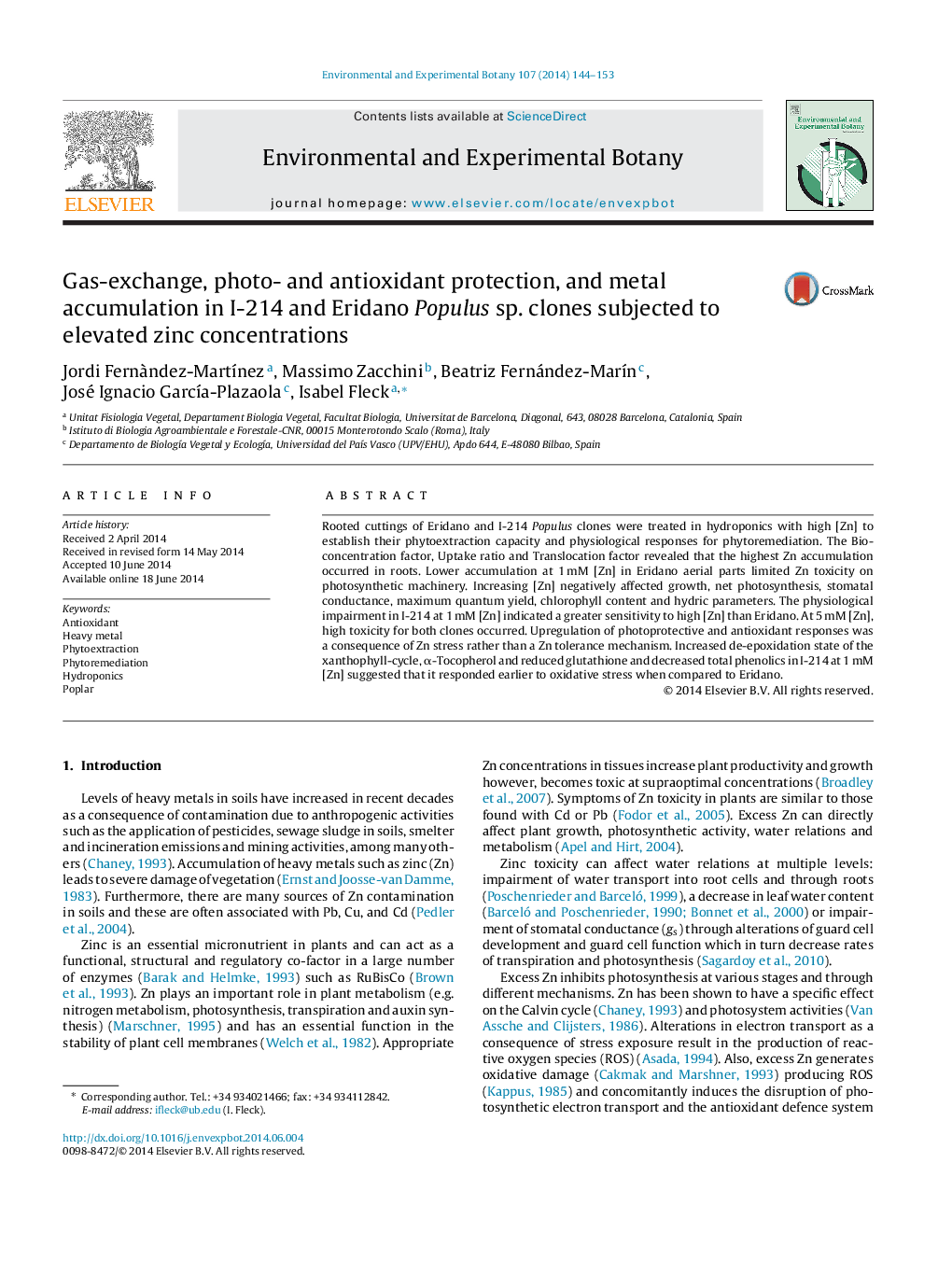| Article ID | Journal | Published Year | Pages | File Type |
|---|---|---|---|---|
| 4554405 | Environmental and Experimental Botany | 2014 | 10 Pages |
•Eridano and I-214 Populus clones were grown in hydroponics under high Zn levels.•Growth, photosynthesis, water relations and chlorophyll content were impaired.•Eridano accumulated lower [Zn] in aerial parts than I-214, thus avoiding toxicity.•I-214 photo- and antioxidant protection demonstrated earlier oxidative stress.•Eridano exhibited greater tolerance to high [Zn] than did I-214.
Rooted cuttings of Eridano and I-214 Populus clones were treated in hydroponics with high [Zn] to establish their phytoextraction capacity and physiological responses for phytoremediation. The Bio-concentration factor, Uptake ratio and Translocation factor revealed that the highest Zn accumulation occurred in roots. Lower accumulation at 1 mM [Zn] in Eridano aerial parts limited Zn toxicity on photosynthetic machinery. Increasing [Zn] negatively affected growth, net photosynthesis, stomatal conductance, maximum quantum yield, chlorophyll content and hydric parameters. The physiological impairment in I-214 at 1 mM [Zn] indicated a greater sensitivity to high [Zn] than Eridano. At 5 mM [Zn], high toxicity for both clones occurred. Upregulation of photoprotective and antioxidant responses was a consequence of Zn stress rather than a Zn tolerance mechanism. Increased de-epoxidation state of the xanthophyll-cycle, α-Tocopherol and reduced glutathione and decreased total phenolics in I-214 at 1 mM [Zn] suggested that it responded earlier to oxidative stress when compared to Eridano.
Graphical abstractFigure optionsDownload full-size imageDownload as PowerPoint slide
